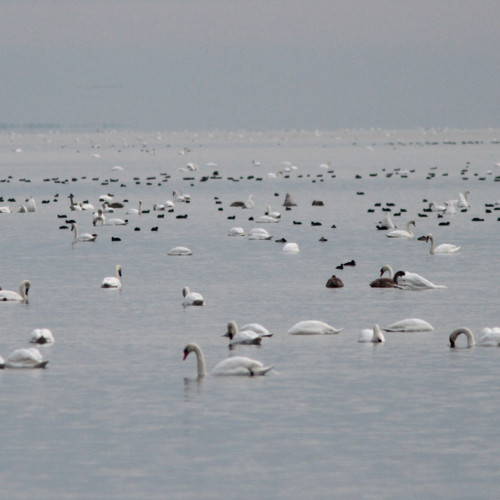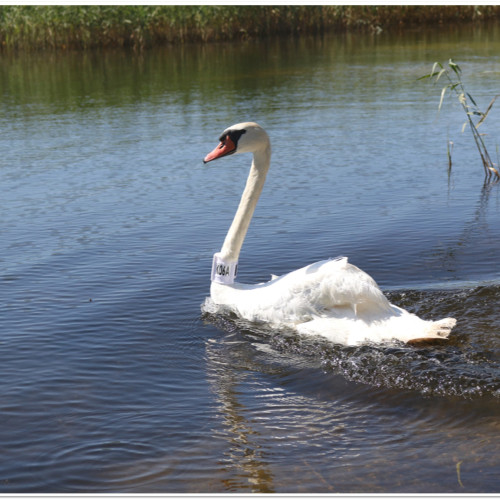In addition to regular shipping, recreational activities, such as kiteboarding, are organised in the lagoon during the summer months. Shallow areas, which are usually rich in aquatic plants and water birds that feed on them, are especially suitable for these activities.
Little is yet known about the effects of shipping and recreational activities on waterbird behaviour. The Curonian Lagoon has a high abundance and diversity of waterbirds, however, in areas where human activities and bird habitats overlap, bird dispersal can be quite strong. The impact of frightening (or disturbance) is likely to be even greater in the second half of the summer, when many waterbirds change their feathers and are unable to fly, which makes them very vulnerable.
By combining bird monitoring, aquatic vegetation studies, and data from tagged mute swans' transmitters, MRI KU reasearchers investigated how swans used aquatic vegetation habitats for food. Senior researcher Martynas Bučas says that the most important feeding areas for swans are shallow areas up to 1 metre deep with dense, submerged vegetation dominated by stoneworts and pondweed. Swans are less likely to use broad-leaved pondweed vegetation at depths of 1-2 metres for feeding.
Taken together, the results of the research revealed that mute swans in the Curonian Lagoon used only half of the food-providing habitats. The birds were displaced from a large part of the food-providing areas by powerkites and shipping. Senior researcher Rasa Morkūnė pointed out that swans avoided people during the particularly sensitive flightless period and were easily affected by visual disturbances such as ships and powerkites. The birds saw high-flying and bright kites from a great distance and left the area or hid in habitats that provided little food. It had been found that swans that could not fly mostly just hid in reedbeds for about a month during the second half of summer to avoid any possible contact with human activities. As a result, the birds did not have the opportunity to feed during the day in the most suitable habitats, and did not emerge until after dark.
***
Julius Morkūnas, a lecturer at KU, says that in order to effectively protect birds and their habitats, it is essential to continue to study and understand bird behaviour, especially under conditions of human disturbance. This is the only way to ensure that birds have access to safe habitats that are large enough to feed them. Therefore, recreational and other human activities that disturb winged birds should be kept well away from important areas and, in the absence of sufficient studies and data, even larger protection zones should be identified as a precautionary measure until reliable studies are available.
***
The full article can be found in: https://byt.lt/IufQ9 .
The research was carried out in the framework of the Research Council of Lithuania project Ecosystem Services of Charophytes in the Estuarine Hypertrophic Lagoon under the Climate Change.
Open access to the article after the end of the project was partially funded by the Research and Studies Promotion Fund of KU.
Photo by Julius Morkūnas:Mute Swan Aggregations in the Curonian Lagoon








